Pat Muhs - Balancing Tech and Humanity in Sales - PODCAST TRANSCRIPT
June 24, 2025 at 12:38 p.m.Editor's note: The following is the transcript of a live interview with Pat Muhs of Moose Roofing. You can read the interview below or listen to the podcast.
Intro: Welcome to Roofing Road Trips, the podcast that takes you on a thrilling journey across the world of roofing. From fascinating interviews with roofing experts to on-the-road adventures, we'll uncover the stories, innovations and challenges that shape the rooftops over our heads. So fasten your seat belts and join us as we embark on this exciting Roofing Road Trip.
Heidi Ellsworth: Welcome to another Roofing Road Trips from Roofer's Coffee Shop. My name is Heidi Ellsworth and again, we are talking about one of my favorite topics, sales. Sales and technology, because it all goes hand-in-hand today and contractors need to be up on how that's working, but at the same time, never forgetting the human factor and those relationships that they build every single day out in the field. So we talked to our friends at Sales Assist to come in and share some of their knowledge, their wisdom about what's happening around technology and that human interaction. I am so excited to have Pat Moose back to talk to us. Pat, welcome.
Patrick Moose: Hi, Heidi. How's it going?
Heidi Ellsworth: It is going good. I'm so excited to see you. I enjoyed our last podcast so much. I love talking about sales and technology.
Patrick Moose: I'm excited to be here too. And when you said the human interaction, the technology, I'm definitely going to have to rely upon my history and my ability and the human interaction part because tech is not my thing. However, we employ it day in and day out all day long here in several applications that definitely make our lives easier around here.
Heidi Ellsworth: Yeah. Yeah, it does. It makes it easier, sometimes a little bit more chaotic, but it definitely makes it easier. So let's talk about that a little bit. But first of all, if you could, introduce yourself and tell us about your business.
Patrick Moose: So I'm Patrick Moose. I'm the owner of a roofing company and of Sales Assist, which is a app that we've built that uses 3D animations to explain some of the really complicated elements of roofing assembly, a roofing process that is an effective tool for project manager, salespeople, whatever moniker you use for your representatives that are in the field and meeting with homeowners, with business owners to explain the processes that we employ to make sure that we put a good roof product on a customer's building or home. Oftentimes, I think we, in the industry, take for granted how difficult and how complicated some of the concepts are that we have to explain to a homeowner or to a business owner that we know it inside and out. A lot of us come from the background of actually being out in the field and the people who do the installations, but we have to remember that our homeowners and some of our property owners don't understand complicated construction processes.
And so this is a tool we developed to can some of our short clips on the most complicated and most hard to effectively communicate to our customer to help explain what we do.
Heidi Ellsworth: That is great. Wow. I mean, what a great tool and something that is so important as construction, roofing in general is really catching up on the technology front. And with that in mind, Pat, let's talk just a little bit about that balance. I know there's a lot of contractors out there who maybe are a little bit older and who are thinking this technology stuff is just too much and that we're losing, we are missing that relationship base. How do you recommend, being a contractor and having a software company, how do you recommend keeping that good balance between technology and human interaction?
Patrick Moose: Well, you're picking on me, Heidi, because I am that guy that you just described. Technology often baffles me, I'm just not a person who grew up using it on a regular basis. I'm still a pen and paper, notebook guy. And so that's part of the reason why I'm so excited about Sales Assist is that we have made this very user-friendly, I think quite easy to understand. It's not the kind of thing where a person needs to go out and get a degree in order to use what we have developed over at Sales Assist. It is an enhancement or an augmentation to the sales process that people have already got established and it's just a tool that you can implement that you can insert into the sales process in order to take away some of the long and arduous affair that is trying to draw pictures or use hand signals to animate how air flows through an attic space or what have you. For the people who might be hesitant about embracing this, we've got some real statistical information about how it is helping with closing.
There's a number of elements to what we do and how we do it with Sales Assist. Again, we didn't have to change anything about our sales program in order to employ Sales Assist. It's just simply a tool that we use to make it better, make it faster, make it more complete, more understandable. And there's a number of inherent values, if you will, utilizing this technology and utilizing this program. As we're doing our sales presentation and we build in small clips throughout the entire process, it's forcing a person to practice the pitch before they get to the dining room table. It affords an opportunity. We have some analytics on the backend of this thing that allow owners of contracting companies to see how much of the videos and how much of the tools that are being employed are actually being used when the presentation is being done.
I talk about the dining room table because the vast majority of what we do is residential roofing, but it doesn't matter if it's in the boardroom or a conference room or the kitchen table, dining room table, very effective tools just using an iPad or a notebook and we're finding it to be very... The feedback that we're getting is that it creates or in essence, it helps with some predictability and some continuity within the sales process and then affords the project manager an opportunity to pay attention much more so to the customer and what their needs, discussing budget, discussing the elements that must be addressed. If we're not stressing over trying to figure out how to explain a concept, then we can pay attention more closely to the process.
Heidi Ellsworth: I love that. And what it really comes down to is using technology to enhance the human interaction and that's how it should... It should enhance it. I look back and think about when I was with Eagle View and contractors were like, "No way. Why would you want something from the air to measure the roof?" And it's because it gave you more time with the customer and you didn't have to teach as much. I mean, you still have to know how to measure a roof, but to your point now, same thing. Because you have these great videos, this great education for homeowners, salespeople are able to really spend that time with the homeowner and explain it in a way that makes sense and that they can actually keep, they can be able to see it later on when they're trying to understand what did they say about ventilation? What am I supposed to be thinking about?
Patrick Moose: Well, that is a very good point that you bring up, Heidi. Two things, I remember when Eagle View came onto the scene and frankly, while we're addressing the older mindset, that paradigm that exists within the industry, which is the way that I would always differentiate myself from the competition and our sales staff was that we were really well educated and very well trained. And I was frankly a little bit upset when Eagle View hit the scene and now subsequently, there's been a number of other applications that have come along that do essentially the same thing. But I said, doggone it, this level's the playing field. And now somebody who has no idea what they're doing when it comes to the roofing process is going to be able to communicate measurements and have a neat little presentation that they can show the homeowner. But what I discovered, truthfully, is that it didn't give anybody else a greater advantage. If we can spend our time actually communicating with the homeowner and doing a really deep dive and finding out exactly what they need, that's where the rubber hits the road in the interaction with the homeowner.
It has nothing to do with how well you measure the roof because we've seen in the past, when guys were pulling a tape measure and forgot one of the slopes that they were putting on there that the customer didn't know anyway, right? And so my initial reservation or my, I guess, dislike for the technology being introduced was ill-founded for sure, because it does indeed afford me an opportunity to train my people more quickly now. I mean, 20 years ago, it took me a couple of years to have one of our representatives get to a point where their education was great enough with measuring and being able to handle all the nuance that's on a roof. And it took a long time for people to be trained well enough to be able to go on their own, never mind that that technology has saved a lot of time on the roof and it's made it much more safe to do what we do.
Heidi Ellsworth: Exactly.
Patrick Moose: So therein lies the reason right there why embracing a new technology, a new app, so to speak. It's not a new technology at all. It's just a new way of utilizing technology. And if I didn't say it before, certainly I want to enhance the part of the conversation that is, I didn't get replaced by Eagle View. As a matter of fact, we're only better at what we do. And so when a person is contemplating, should I embrace this movement? Listen, there are new apps coming out every single day, that there is five or six of them that we use on a daily basis on every job, we use them a hundred times a day by all of our staff that's employing technology and without that, we wouldn't be nearly as efficient. So it's not a matter of whether or not you could or should not, it's just how much of it should you use and how effective can you be in employing them, especially those applications that have to have integration so they work well together. It's a no-brainer.
And finally, you just can't count on it to or have the fear that that technology is going to replace human interaction. It's only there to enhance it and make it better. So we're not going to get pushed out of this business by technology.
Heidi Ellsworth: No, we're not. It is such an enhancement. And I think you bring up some great challenges. We had challenges in the past of educating our sales reps, educating your new employees to really understand it. Now today, technology is able to make that much faster, that education process. So as you are looking at, right now, the sales process that's going on out there in roofing companies, both from your stance as a contractor and as a software business owner, what are you seeing as some of the greatest challenges and how is technology starting to really help with some of the solutions?
Patrick Moose: Well, first of all and this may be falling back on that question about should we or should we not be using technology, the challenges that we face today is that things move much more quickly than they have in the past and our customer is much more discerning. I don't think that that's a challenge. I think that's actually a good thing. They've got access to applications, they've got access to technology, to information that is endless. Not all of it is true, not all of it's correct, but it's out there. And when we take the time to familiarize ourselves with what's available to our customer, what's available to our property owner, the competition, that's one of the things that I'm really doubling down on all of the technology that we're employing, the investments that we're making in the tech side of the business because we have to stay ahead of our competition. There's a lot of really amazing things that private equity are bringing into this space. People realize that there's a lot of money to be made in this industry.
And I think, frankly, we have lacked in sophistication for so many years, decades even, that now that there is this opportunity to inject a lot of tech and a lot of understanding of a lot of technology into this space, I think people see that as a huge opportunity, so we just have to stay on top of the power curve on that.
Heidi Ellsworth: Yeah, I do too. I agree. I think that's the number one challenge, staying in front of it. Because I'm going to say I'm with you, what you said at the very beginning, technology sometimes just stymies me, but I do know that it is the most important thing for my business, for our business, that we embrace it and really make that happen. And I think that is one of the greatest challenges that roofing contractors and companies have today, is that not just embracing it, understanding it and understanding how to enhance your business with that. So let's talk. You mentioned this earlier and I just want to kind of go back and talk about this a little bit, is how homeowners have changed in their research patterns, how much research they're doing, how much they expect to be educated and how that really is starting to affect close rates and really being able to take your business to the next one. So what are you seeing around that?
Patrick Moose: Yeah. Well, the readily available information is being accessed, it's being used, the customer is compiling their own data. And again, that doesn't necessarily mean that all the data are correct, right? There are times when some pretty wild notions have been developed, when we get into that dining room or boardroom to have a conversation. But usually what it ends up being, new information that has been mixed in with an old paradigm. We see this a lot with people who the line of, "I used to do this when I was a kid," And things have changed so drastically, so dramatically, that we just have to be right. And so utilizing our own technology and making sure that we're getting the appropriate source material to remain relevant and to remain correct is certainly the most important of all of this. The other thing that I think that people have to understand and I might sound like a little bit of a broken record, but we can't allow the technology to replace what we do.
We still have to be that consummate professional. We still have to be the person who knows exactly what it is that's being proposed, know what the customer is asking for, knowing how to bridge that gap between the two to get to that budget and get to the understanding of exactly what the customer needs. And so we can't allow the technology to replace us and our ability to interact with that customer. We get asked, since we can make a custom video with our program utilizing little short clips in sequence to explain the process from beginning to end for our homeowner, oftentimes we were asked by a contractor, "Hey, can we just crank this thing out and put it into an email and send it off to the customer?" It's like, well, how does that work for you when you send estimates via email? How does it work when you roll up a paper one and stick it in the front door and then somebody comes along and snatches it, that's knocking on that door, right? No.
Why would you take the technology, why would you take the opportunity and the advancement in your sales process that sets you apart from all the rest of the competition and then try to figure out some way to relegate yourself to being just all the rest of them and then emailing them something anyway? Utilize this, make sure that you're practicing, make sure that you've got this all down. Be the person who shows up for the game and that's the first time you practice the play. And so again, I'm not looking to change anybody's process, certainly not qualified to give anybody advice, but we have found that this creating the continuity or the consistency within the sales process, utilizing these videos and then there's feedback amongst the group of guys when they train and when they warm up to go out for their sales day, it's like, "Hey, I've found presenting this sequence in this way is a really effective means of communication."
So we've got this collaborative going on with our sales staff and they're helping one another out, boosting one another up in this process to make sure that we're doing the best that we possibly can. I consider it a duty that our company, when we're out working in our community, that I consider it our duty to be the person who is chosen by our customer.
Heidi Ellsworth: We know they're coming ready for these appointments and really they want to learn. And so that's what I love about Sales Assist, is that to be able to watch these videos and really be able to teach homeowners why ventilation is important, why underliements are important, why all these different things. But I want to talk a little bit about training the salespeople. So the salespeople are using the new technologies and I'm just going to say specifically Sales Assist. How do you go about training them that they are also listening, like you talked about earlier, listening to the homeowners, but then also being able to really use this technology to educate and substantiate their research, basically, as they're working through that?
Patrick Moose: Right. Well, the research part of it has been done because the original impetus for how this all came about was that we were using it to train a consistent training platform for the people who were in production. And then that evolution took it to the production guys simply suggesting it's like, "Wow, why don't we get this into the trainer's hands for when we go through the sales bootcamp and the training process?" And then those salespeople, the idea was born of then taking it directly to the homeowner. And that's where this platform really became more engaging or the app. I probably shouldn't call it a platform. There I'm exposing myself from my lack of tech lingo. But where this app, where we can utilize it to actually communicate with the homeowner. And that's where we really started dumping a lot of time, effort and energy into making sure that we could make this into a user interface that is attractive and that makes a lot of sense to the homeowner, that's easy to use when it's in the field.
When it comes to the training of the salespeople, we're learning. I think in our industry, we are typically a field of cowboys. We kind of tend to shoot from the hip and we want to do things on our own and we're very individual in this space. But when you've got a professional organization, when we started to gain traction and become more and more successful in scaling the business, we began making that continuity, creating that continuity in the sales process by having professionally trained people, where we go off to seminars as groups. Our guys trained together on a daily basis in the mornings before they go out in the afternoons and evenings to meet with our customers. So having systems, having process, having protocol that we all adhere to, we manage our process and we lead our people, we set a good example and so having this process set up where every day there's participation, it's no different.
I think that sales and this is not something that I came up with, but it is something that I certainly have adopted or adapted my way of thinking to, is that sales is very, very closely related to a professional sports team and we do take it that seriously. I was going to say or college or high school or whatever, but a professional sports team, that's how we look at this. And so it would be kind of silly if we thought that we could be professionals without practice. And how you practice is how you perform. It's not practice that makes you perfect, it's perfect practice that makes you perfect. And so in an environment where we're collaborating, where we're supporting one another, where we do role playing every single day to some degree and I'm just utilizing the Sales Assist tool, amongst others, but we're here... I'm plugging Sales Assist, right?
Heidi Ellsworth: It's okay.
Patrick Moose: Something that has really helped us increase our closing rates because it does indeed help customers understand of some very complicated roofing processes through these 3D animations. And so when we're hitting that on a daily basis, the guys are getting really good, I alluded to earlier, where they'll actually help one another out and saying, "Hey, I've found success with showing this particular clip when I'm talking about this particular part of our process, this particular video or animation." And so they can help one another out to increase their productivity. And the thing that I like and I think I've mentioned this before, maybe on the other podcast, but one of the things that I love about our program, about Sales Assist and the app, is that you go to these seminars, I've been to them before where somebody asks you, "Hey, just abandon everything that you've been doing up to date. You're doing it all wrong. If you'll just buy my program, then pay me 60 grand a year and we'll get you fixed and get you going."
Well, that cowboy mentality, that individualism, the ego of industry, so to speak and I'm saying ego in a positive way, not as a negative connotation at all, but is that I don't want to abandon my process. We've spent years and years and years perfecting it and I don't want to give you the impression that I think it's perfect, there is still a lot of duct tape and bailing wire holding this thing together here, but we've spent so much time perfecting our process and we're aware of the growth and of the success of that program. And so Sales Assist is an opportunity to just enhance what you're already doing. I know I've used that word a few times during this podcast, but it's an enhancement. It's not a replacement. And that mindset has to be pervasive throughout the entire program with a company is that technology is not going to replace what you do. Technology isn't going to replace you as a person. The Sales Assist program isn't going to magically sell stuff for you. We still must be roofing professionals, sales professionals in our space.
Heidi Ellsworth: I love that. I think that's so true. But I also really, that enhancement of the technology, those 3D videos, those 3D imagery that really explains what's happening up there, I think that's key. That's key to closing, that's key to having educated consumers and to long-term relationships and referrals. It all plays together. Well, okay. So one of the things I kind of want to talk about, because I think this kind of scares people, but you said it and it was really cool, that salespeople are helping each other, right? And this worked great here, this worked great there. Your whole program is backed by analytics, so you can kind of see where people are stopping, where things are really working. So as contractors are out there putting together their sales presentations, contacting Sales Assist or maybe they're just putting together the sales presentations using technology. What's some of your advice on really infusing the human touch along with the technology, along with all the video and everything else into these sales presentations to really make it fit for them?
Patrick Moose: Well, I compared the sales process to a professional sports team and no matter how good the players on a professional sports team, the advice that I would give is that they better have a darn good coach. So there was a lot of years that I, as the guy who started the roofing company, brand everything. I was sales, I was production, I was the front office. Good Lord, was that a disaster? And as we see the need for and the ability to replace ourselves in the steps along the way, that I recognize that there were a lot of people out there who were much better at sales than I was, people who had the classic training in the sales process. And I come from a background of being the guy who's on the technical side. I was a production guy. I've been roofing houses since I was 10 years old. So I tend to look at things from the perspective of production and my opinion, the way that I led in my organization, was always that giving people all of the information that they needed to know and telling them everything...
No, let me go back. I tried to communicate everything that I knew to a homeowner. And so again, I have to go back and emphasize the advantage of using the app, Sales Assist, in development and enhancing of a sales process, because it takes away from a lot of that shooting from the hip, a lot of that... I don't want to give people the impression that there's no individuality or that there's no personality that comes from the sales person in the process because that's absolutely not true. Everybody says something in a little bit different way or presents with a little bit different nuance on certain points and that sort of thing. But if we can consistently have a coach watching over what we do for our sales process and putting that into a formula that we know works, we're going to improve our chances of going out and having success in that boardroom or in that dining room. That's the part that's appealing, is that humans are very resistant to change, we fall into our habits and we've got our routines and we really don't want to change anything.
But I can show a sales representative how the deals that they're going out on and the interactions they're having with their customer, if they can disclose one more of those per week, that's a lot of commission that comes in for just adapting a habit a little bit, for just paying attention to some minute details, for getting on board with the team, for listening to your coach to make sure that you're optimizing the advantage that you've got in setting yourselves apart from the competition. And then we also have to understand, of course, that it's not always another roofing contractor you're competing with. It's some of the mores, some of the paradigms in the industry, some of the notions, perhaps, that an insurance company shared with the homeowner that all roofers are the same and that all roofing is the same and nothing could be further from the truth, but this is a way that you can demonstrate that, this is a way the person can demonstrate that.
And then to convince a business owner like myself, why Sales Assist? Well, again, we are very diligent about seeing how we get our leads, how well those are disseminated, getting the right leads into the right hands of which one of our sales representatives and if we've got some analytics that are coming back and being able to see how well our staff, how they're doing. All of our guys are all W-2, so I call them staff as their employees. Some folks have 1099 salespeople and what have you, but you still want to afford, no matter what their relationship with the company is, you still want to afford them the opportunity to achieve the best success that they possibly can. And when I'm talking to another business owner about this, it doesn't take very long to understand this. We all have to pay for leads no matter how we get them, whether they come in through a social source, whether we're out knocking doors, whether it's a referral, those do cost, right?
Heidi Ellsworth: Yeah.
Patrick Moose: A person has to have spent time, energy and a lot of effort and years of being in the industry and performing well to gain a referral. So they're all expensive and if we don't waste them, if we improve the chances and the ability that we've got to close on those deals, well then that's not a very hard sell.
Heidi Ellsworth: Yeah, no, it makes so much sense. And I think, to kind of wrap this up, I also think the consumers are expecting it. I think they're expecting it. Now, not everyone and it's still a growing thing, but if you walk in there without the technology, I think you're already walking in behind and it's not going to be the same.
Patrick Moose: I would definitely agree with that observation, Heidi, is that I too would be reluctant to say that every customer is expecting it, but I would absolutely get behind what you just said is that if one representative comes in and is utilizing technology and doing it well and providing a service for the homeowner and somebody comes in with a paper copy and an idea about, yeah, I could get that off and get something else back on, I can tell you most certainly who the customer is going to choose. A well-informed and confident customer is going to choose the person who brought that technology and had the ability to communicate to satisfy the needs of the customer.
Heidi Ellsworth: Exactly. Every time. Every time.
Patrick Moose: Every time.
Heidi Ellsworth: Pat, as always, I love this. This is so great. Thank you so much. Next steps, how do they find Sales Assist? What do they do next to start looking at adapting and adopting this in 2025?
Patrick Moose: Well, hunt us down on the Roofer's Coffee Shop, right? That's the first place that you should look or you can look up Sales Assist.
Heidi Ellsworth: Perfect. And ask for a demo because that always helps explain everything.
Patrick Moose: Yep. That's exactly right. Yes, indeed.
Heidi Ellsworth: Yeah. Well, thank you again. I look forward to seeing you. We have show season coming up in front of us, so I'll be seeing you in person. But we'll be doing this again, Pat. Thank you so much.
Patrick Moose: You got it, Heidi. I can't wait to see you as well.
Heidi Ellsworth: Okay. Thank you. And thank you all for listening. Please check out Sales Assist directory on Roofer's Coffee Shop. It is so cool, the 3D animation and the explanation, the research that... It's just smart. And so check it out, get it into your system and check out all of our podcasts under the read, listen and watch navigation, under Roofing Road trips or on your favorite podcast channel. Be sure to subscribe and set those notifications so you don't miss a single episode. We'll be seeing you next time on Roofing Road trips.
Outro: If you've enjoyed the ride, don't forget to hit that subscribe button and join us on every roofing adventure. Make sure to visit Rooferscoffeeshop.com to learn more. Thanks for tuning in and we'll catch you on the next Roofing Road Trip.







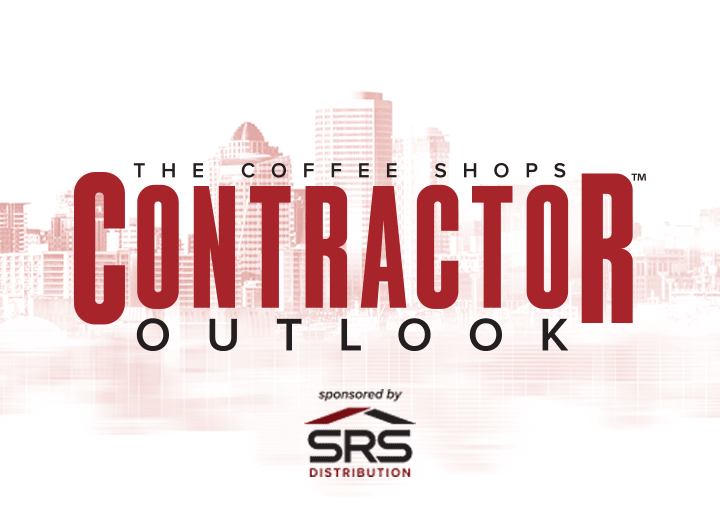

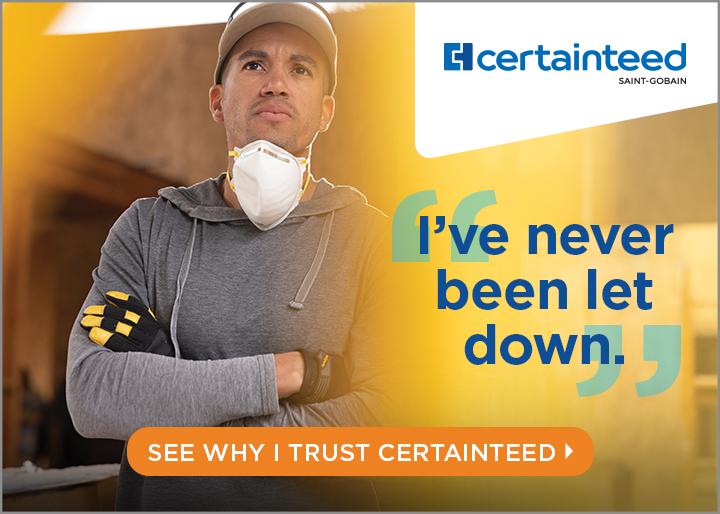
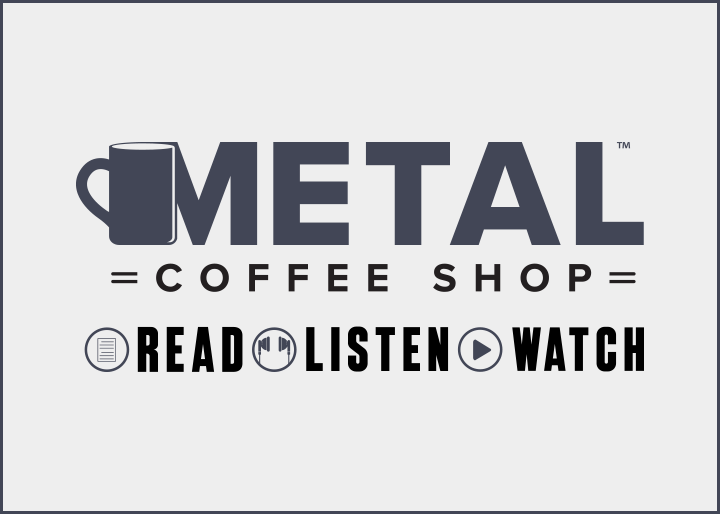
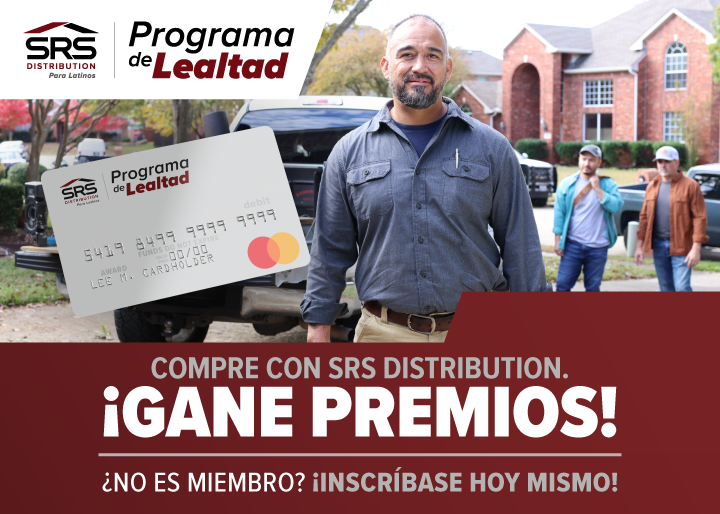
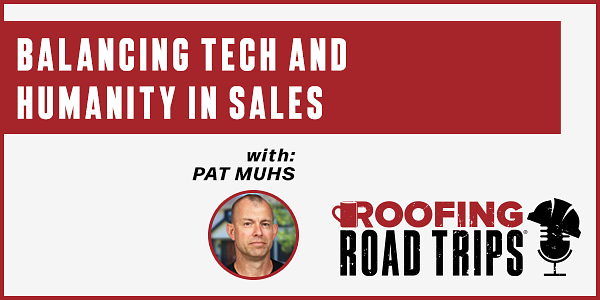
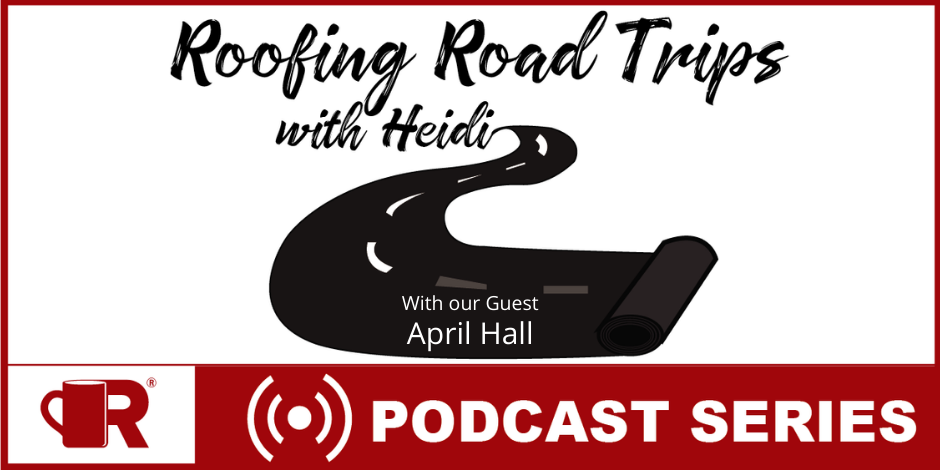
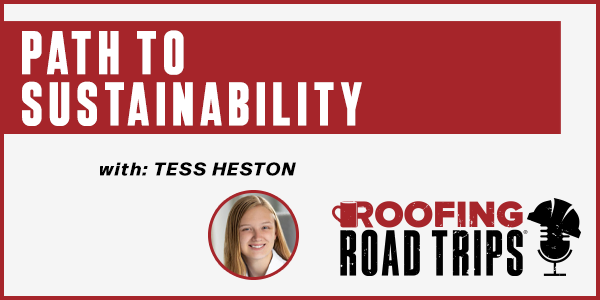
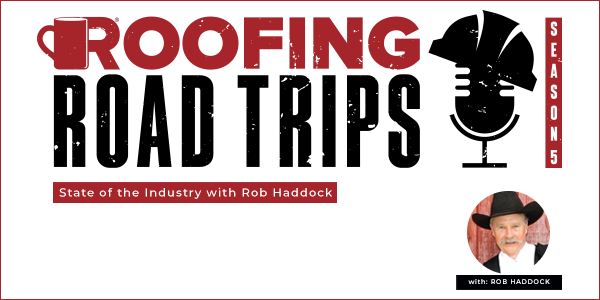

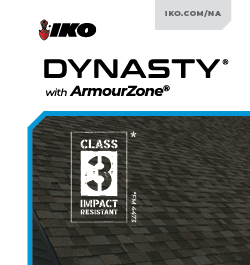


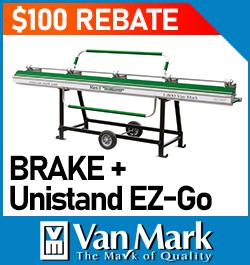
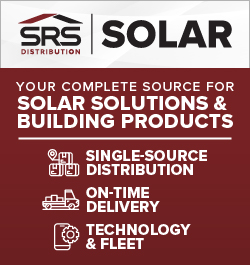
Comments
Leave a Reply
Have an account? Login to leave a comment!
Sign In